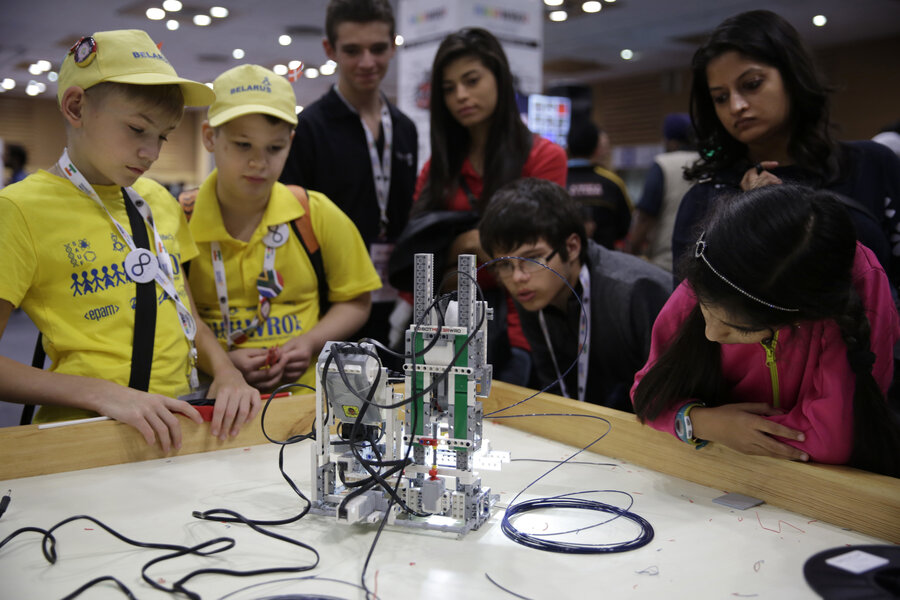Coding and motors: How Lego's new robot toys fit with the Maker movement
Loading...
Lego will unveil a new set of robotic toys in the second half of 2017 that let kids ages 7 and up program motors and turn pre-existing blocks into robots using a simplified iOS and Android coding app.
Lego Boost, retailing at $160, will come with instructions for how to build five pre-designed robotic toys, while also giving kids room to innovate using pieces from other Lego sets – and let the toys “talk” via a recording app, according to CNET.
The new kit might be thought of as part of a long-term effort by tech and educators alike to design DIY robotics kits that don’t seem forbiddingly complex at the outset – one that looks ahead to what many policy heads see as the role of the burgeoning “Maker Movement” in powering American manufacturing.
“At the heart of this movement are so-called makerspaces that welcome a diverse group of builders, hackers, and hobbyists who share resources and knowledge," wrote The Christian Science Monitor’s Noelle Swan in 2014.
Some are housed in existing community centers such as libraries, museums, or youth centers. All – and hundreds have cropped up in the past decade in the United States – center on a love of tinkering and a desire to manipulate the functional world.
In these spaces, students who no longer have access to wood and machine shops in school, entrepreneurs who have a great idea but little capital to invest in the equipment necessary to build a prototype, and adults who long for a creative break from staring at computer screens all come together to work, to collaborate, to create.
Key to this movement, though, is keeping the bar to entry low – a challenge that Lego seems to be responding to now, with the complexity of its long-running (and relatively high-cost) Mindstorm toys confounding no small number of adults.
The last version of Mindstorm, writes Mashable editor-in-chief Lance Ulanoff in his review of Lego Boost, is “relatively complex, uses special pieces and requires a lot more patience on the part of kids and parent to work out even the most basic programs…if you’ve never coded before, it can be a little off-putting.”
That doesn’t mean it’s been unsuccessful. But Lego Boost might reach beyond just whiz kids.
“Boost eases that process in almost every way,” Mr. Ulanoff wrote. “The LEGO pieces are all traditional and you can even use your existing LEGO set pieces with it and the coding is largely confined to code-blocks that already have lots of instructions baked in and fully compiled.”
Its release comes a few months after British tech charity Raspberry Pi marked a milestone in DIY tech, selling its 10 millionth unit of its pocket-sized, $35 computers, as the Monitor reported in September:
The organization, which began in 2012 as an effort to get more applicants for Cambridge University’s computer science program, sells pocket-sized computers for $35 or less. It aims to get low-cost computers into the hands of people worldwide, making it easy for them to create tools that meet their needs.
“The primary goal was to build a low cost computer that every child could own, and one where programming was the natural thing to do with it,” co-founder Robert Mullins explained to CNN.
To keep costs down, the Raspberry Pi is little more than a chip – all external hardware must be added separately. This gives users the flexibility to add hardware, and write code, that suits their purposes.








